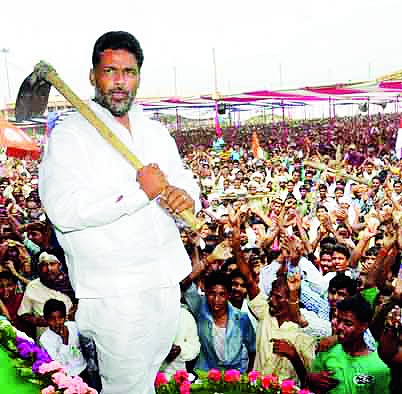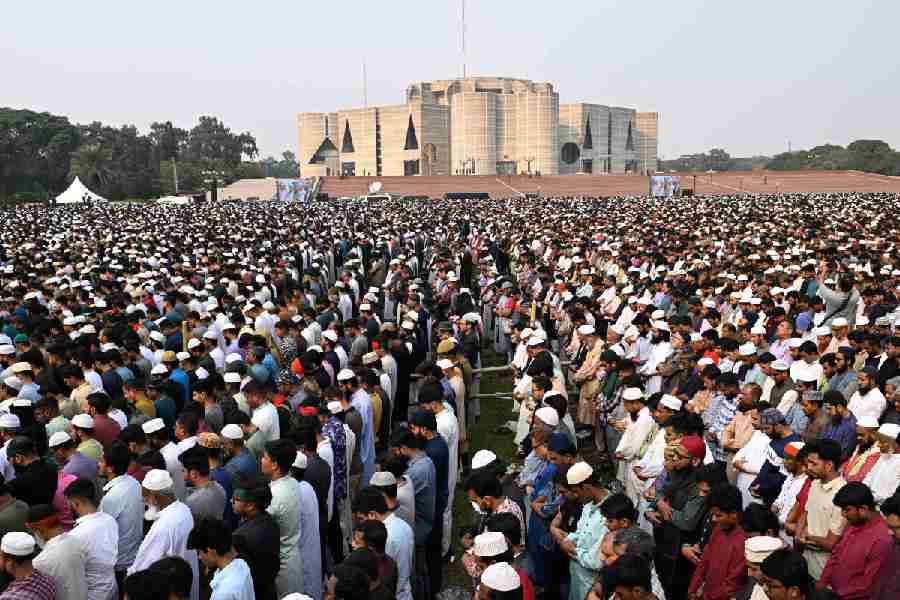
WHEN CRIME PAYS: MONEY AND MUSCLE IN INDIAN POLITICS By Milan Vaishnav, HarperCollins, Rs 799
In 2014, India watched as its new prime minister touched his forehead to the ground before entering Parliament as a mark of respect for what is popularly known as the temple of democracy. But the turf that Modi was deferential to is far from sacred. It has been defiled by the nexus between politics and crime, the subject of Milan Vaishnav's engaging book, which, in the words of the author, is a "modest effort" at unmasking the link. Vaishnav is the one being modest here: this work is one of the most comprehensive examinations of democracy, money and muscle power in the Indian context.
The scale and depth of Vaishnav's research are impressive. He looks at the evolution of the malaise from the years after Independence to the present times. The small, shifting ecosystems created by the coexistence of criminals and elected representatives have not been sacrificed in order to understand the big picture. Vaishnav's enquiry has not lost its precision in spite of its range. This can be attributed to his research that relies on, among other sources, the disclosures of candidates submitted to the Election Commission as well as exhaustive field surveys. He also makes use of simple economic concepts, such as the demand-supply principle, to help readers understand the intricate relationship between crime and politics. Such a strategy has one drawback: the text is not entirely free of dry passages.
The general line of Vaishnav's argument is as follows. "In the early years of the republic, they [criminal entrepreneurs] operated as free agents, willing to sign up with political parties and incumbent politicians to help them get elected." The gradual erosion in the support for the Congress, the widening of social fissures and, perhaps most important, the persistent failure of the State to honour even basic commitments to public welfare resulted in criminals assuming central, visible roles in the electoral process. On the demand side, Vaishnav explains, are financial imperatives. Rising costs forced political parties to induct criminals with deep pockets: the lack of reform in political financing further cemented the place of the likes of Anant Singh - Vaishnav's description of Mokama, Singh's fief, is illuminating - in the Indian democratic system.
The importance of this book lies in its ability to challenge popular ideas. Criminalization of politics, Vaishnav argues convincingly with the help of data and insight, is not a new phenomenon. The evidence he presents is enough to dispel the notion of the early years of India's democratic growth being an idyllic, near-perfect political process. Then, there is also the issue of rational choice exercised by the electorate. It was long believed by the proponents of the 'ignorant voter hypothesis' that criminals turn into politicians on account of illiterate, unaware voters. But Vaishnav shows that on the contrary, criminality can, indeed, lend a candidate with credibility. Here, identity politics converges with the failure of the State to provide citizens with entitlements to create structural vacuums for the criminal-politician to operate in. Such leaders provide citizens with goods and services, protect them from the law, and serve as an intermediary between the State and its subjects. Each of these functions gives them the leverage that is necessary in politics, thereby making democracy compatible with crime.
The deep-roots of the disease make its eradication challenging. Vaishnav, while acknowledging the limitations of his findings, keeps his faith in a holistic approach. Anna Hazare should take note of Vaishnav's claim that solitary institutional measures, such as the setting up of a Lok Pal, are not likely to be effective. Even crowd funding of parties, as opposed to private donations, has limited gains. The key lies in sustained pressure from civil society and the courts to reform politics and its financing.
This brings us back to Modi, who had once compared the criminalization of Indian politics to the spread of diabetes in the human body. Vaishnav's analysis confirms the prime minister's diagnosis. After all, there is no known cure for diabetes.










